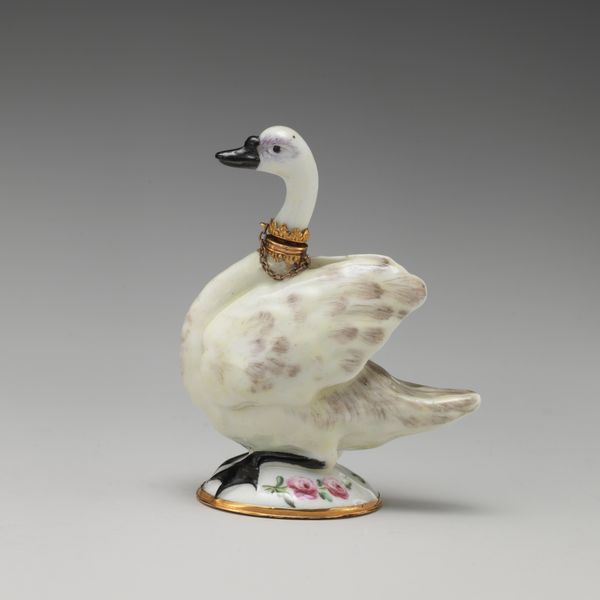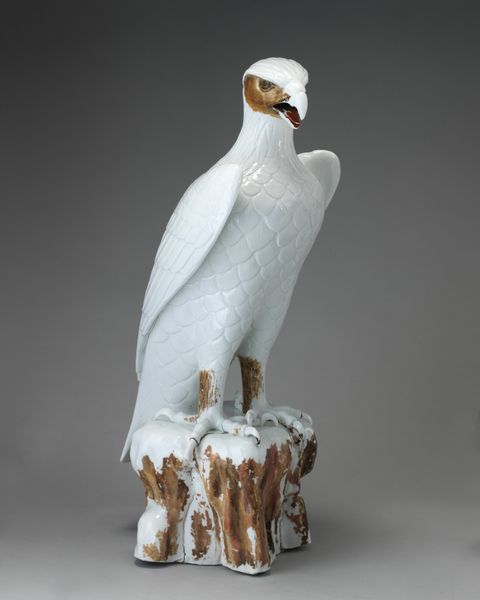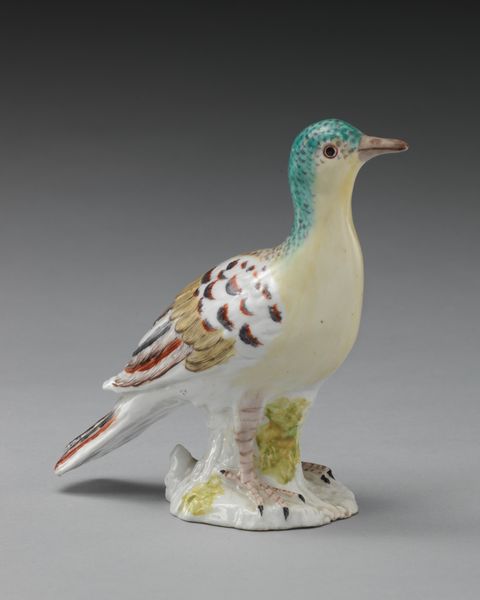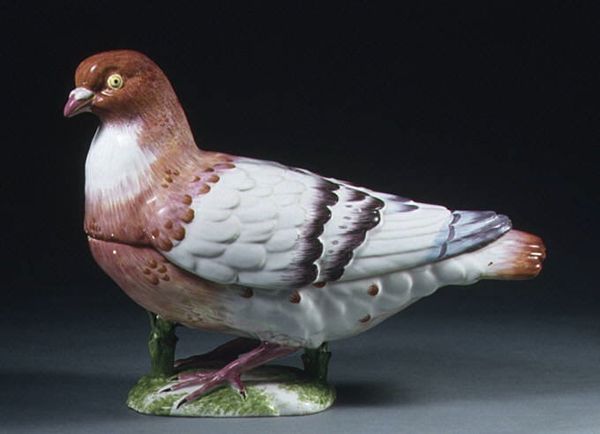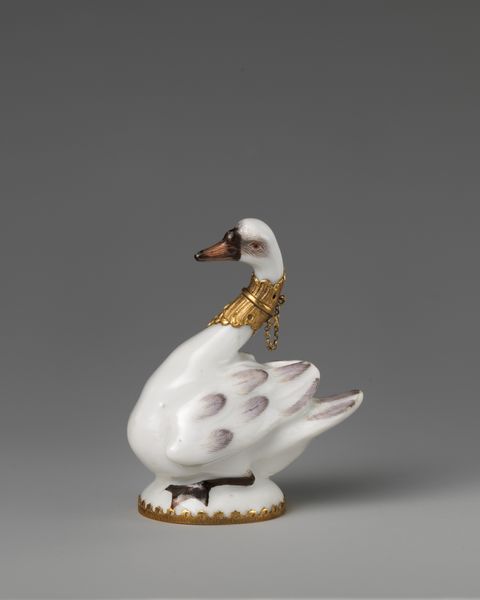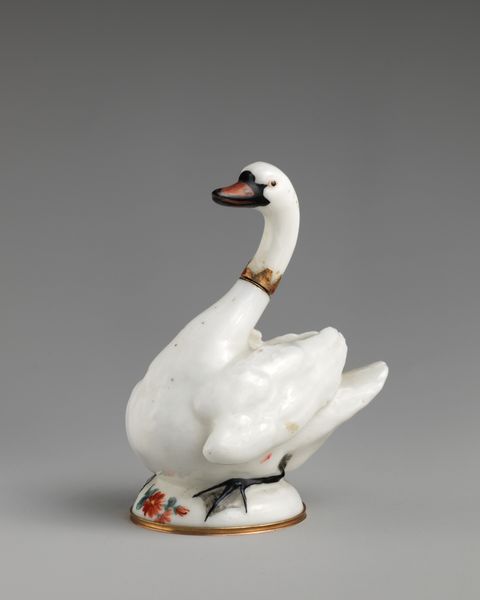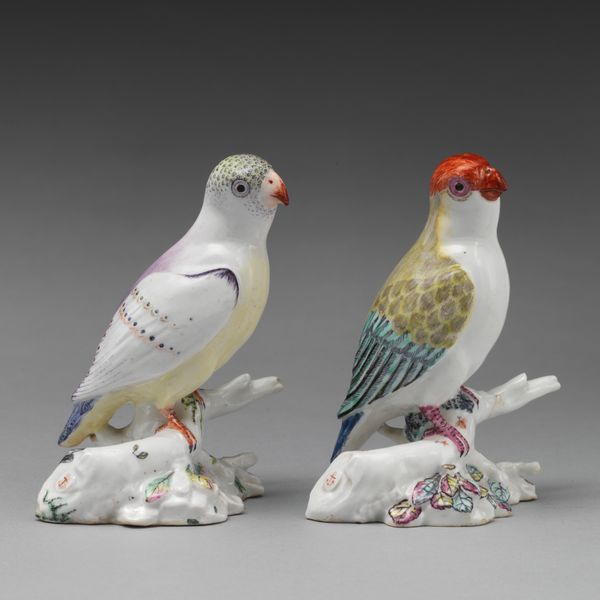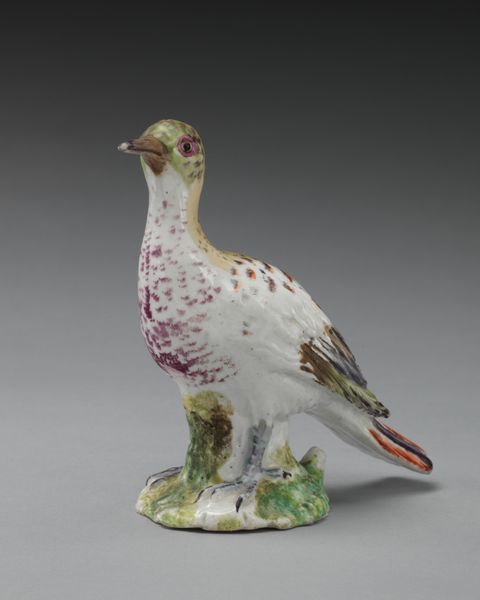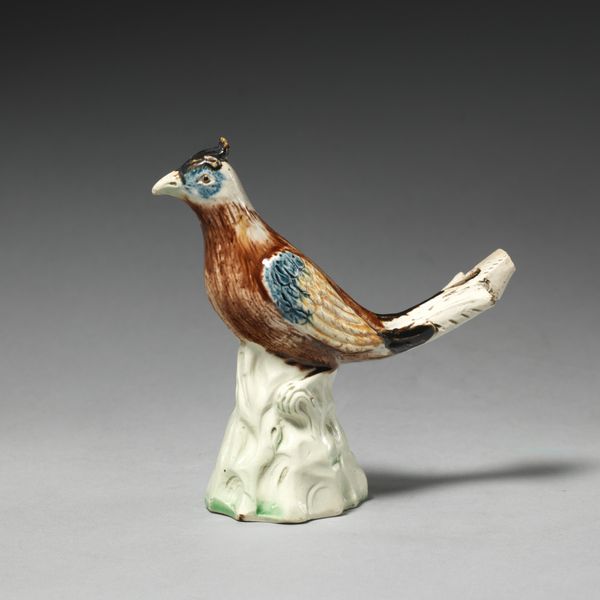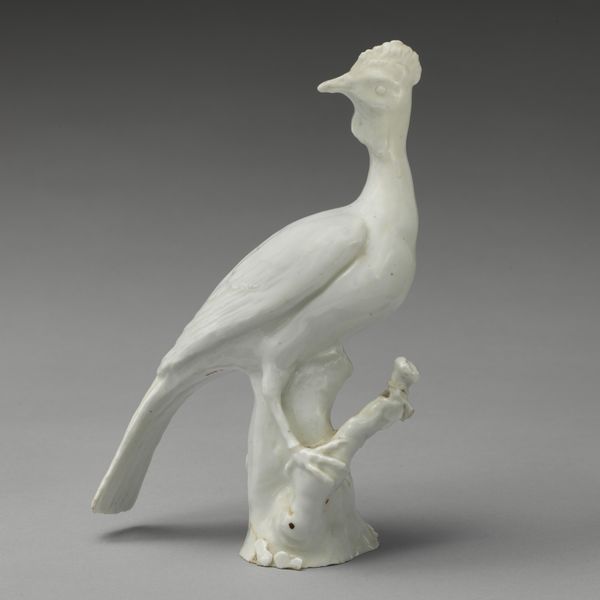
Decoratief object van porselein in de vorm van een jonge kwartel 1913
0:00
0:00
ceramic, porcelain, earthenware, sculpture
#
art-nouveau
#
ceramic
#
porcelain
#
earthenware
#
sculpture
#
animal portrait
#
mid-section and head portrait
Dimensions: height 11.2 cm, width 12.5 cm, depth 8.3 cm
Copyright: Rijks Museum: Open Domain
Curator: Ah, this is delightful! A porcelain figurine from 1913, titled "Decorative Object of Porcelain in the Form of a Young Quail", crafted by Porzellanmanufaktur Nymphenburg. Editor: It's…precious. A bit saccharine, even? All that smooth porcelain. Still, I find its demure pose quietly charming. Curator: It's fascinating to consider how porcelain functioned in early 20th century society. These weren't merely decorations; they signified status, taste, and the embrace of mass-produced luxury. The Nymphenburg factory had a long history. How does this little quail fit into its narrative? Editor: Exactly! And to push on that – how do we position an object like this within art history at large? Is it high art or craft? Was its purpose primarily aesthetic or didactic? I imagine many of these ended up adorning middle-class homes, subtly shaping domestic space. Curator: Certainly. And let's examine the materials. Porcelain itself represents a culmination of alchemical knowledge. The refined clay, the precise firing process, the delicate glazes, speak volumes about industrial advancement. How are these processes reflected in the final product, and what implications does the process hold? Editor: True. It also mirrors society’s relationship with nature at that time. A yearning to capture its beauty in an idealized, controlled form. Does this charming quail reveal a subconscious anxiety about the changing landscapes and industrial encroachments happening all around? Curator: Possibly. Art Nouveau was peaking. And while the subject of a quail fits into naturalistic design trends, the high-gloss, factory finish screams mass production over a connection to raw materials. What happens to art, even craft, when it becomes replicable in such volume? Editor: Food for thought, definitely! The figurine certainly sparks questions about artistic intention, cultural significance, and even anxieties reflected in the consumerism of the era. Curator: Indeed. And I'm left wondering who owned this quail and what role it played in their everyday life.
Comments
No comments
Be the first to comment and join the conversation on the ultimate creative platform.



